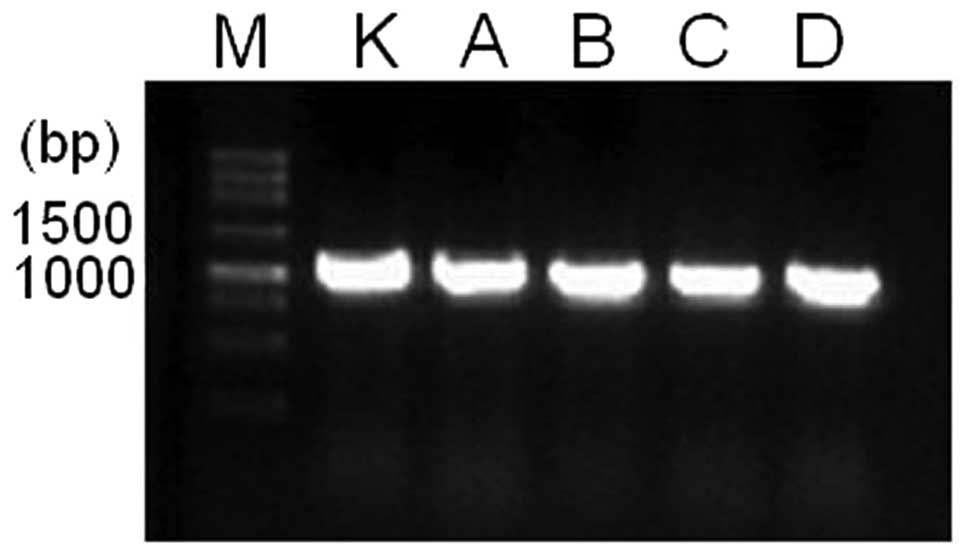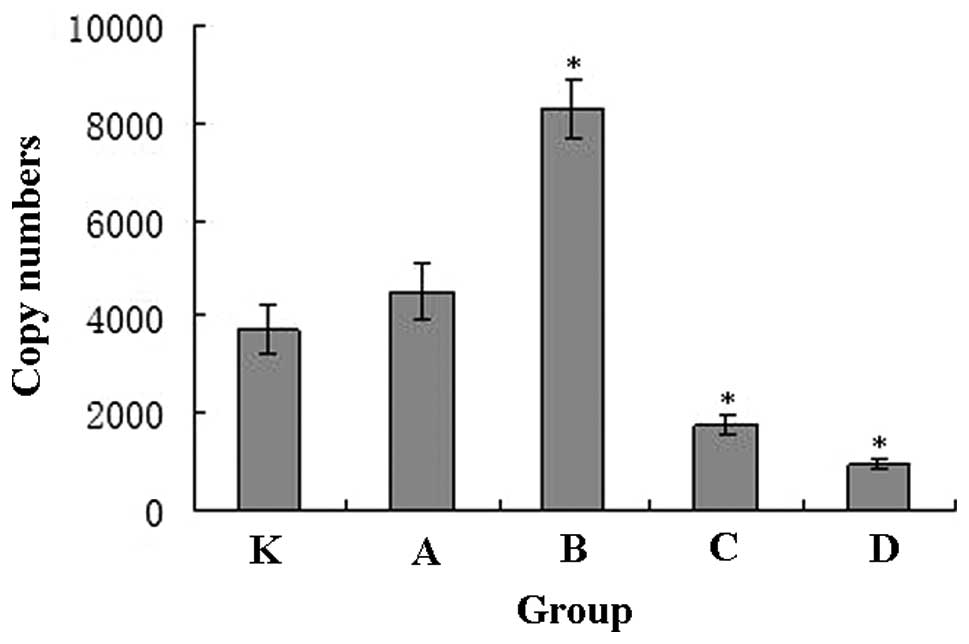Effects of exercise intensity on copy number and mutations of mitochondrial DNA in gastrocnemus muscles in mice
- Authors:
- Xia Cao
- Zhi-Wei Zhao
- Hong-Ying Zhou
- Guo-Qing Chen
- Hui-Jun Yang
-
View Affiliations
Affiliations: Department of Human Anatomy, West China School of Preclinical and Forensic Medical Institute, Sichuan University, Chengdu, Sichuan 61004, P.R. China, Department of Sports Anatomy, Wuhan Institute of Physical Education, Wuhan, Hubei 430079, P.R. China
- Published online on: May 14, 2012 https://doi.org/10.3892/mmr.2012.913
-
Pages:
426-428
Metrics:
Total
Views: 0 (Spandidos Publications: | PMC Statistics:
)
Metrics:
Total PDF Downloads: 0 (Spandidos Publications: | PMC Statistics:
)
This article is mentioned in:
Abstract
The present study aimed to investigate the effects of exercise intensity on mitochondrial DNA (mtDNA) alterations of copy numbers and mutations in the gastrocnemii of mice. A total of 50 male mice were randomly divided into 5 groups; control group (K) and groups A-D, which underwent 10,30,60 and 90 min of swimming per day, respectively. Samples were obtained after 20 weeks of exercise. Total DNA was collected to analyze mutations in the mtDNA displacement loop (D-loop) regions. mtDNA content was quantified by real‑time PCR. Point mutations, monobase insertions and deletions were observed in the mtDNA D-loop regions in the skeletal muscles of the mice. A deletion of 16,232 bp was found in certain groups. The mutation base of the control group was higher than that of the exercise groups. The exercise groups demonstrated significantly altered copy numbers; the 30 min exercise group had the highest copy number. These results suggest that moderate exercise intensity reduces mutations in the mtDNA D-loop regions, and enhances the copy number of mtDNA in the gastrocnemus muscles of mice.
View References
|
1
|
Shen L, Fang H, Chen T, et al: Evaluating
mitochondrial DNA in cancer occurrence and development. Ann NY Acad
Sci. 1201:26–33. 2010. View Article : Google Scholar : PubMed/NCBI
|
|
2
|
Bayona-Bafaluy MP, Acín-Pérez R, Mullikin
JC, et al: Revisiting the mouse mitochondrial DNA sequence. Nucleic
Acids Res. 31:5349–5355. 2003. View Article : Google Scholar : PubMed/NCBI
|
|
3
|
Suzuki M, Toyooka S, Miyajima K, et al:
Alterations in the mitochondrial displacement loop in lung cancers.
Clin Cancer Res. 9:5636–5641. 2003.PubMed/NCBI
|
|
4
|
Mambo E, Gao X, Cohen Y, et al:
Electrophile and oxidant damage of mitochondrial DNA leading to
rapid evolution of homoplasmic mutations. Proc Natl Acad Sci USA.
100:1838–1843. 2003. View Article : Google Scholar : PubMed/NCBI
|
|
5
|
Park HW, Ahn Y, Jeong MH, et al: Chronic
atrial fibrillation associated with somatic mitochondrial DNA
mutations in human atrial tissue. J Clin Pathol. 60:948–950. 2007.
View Article : Google Scholar : PubMed/NCBI
|
|
6
|
Little JP, Safdar A, Benton CR and Wright
DC: Skeletal muscle and beyond: the role of exercise as a mediator
of systemic mitochondrial biogenesis. Appl Physiol Nutr Metab.
36:598–607. 2011. View
Article : Google Scholar : PubMed/NCBI
|
|
7
|
Lievre A, Chapusot C, Bouvier AM, et al:
Clinical value of mitochondrial mutations in colorectal cancer. J
Clin Oncol. 23:3517–3525. 2005. View Article : Google Scholar : PubMed/NCBI
|
|
8
|
Taylor RW and Turnbull DM: Mitochondrial
DNA mutations in human disease. Nat Rev Genet. 6:389–402. 2005.
View Article : Google Scholar : PubMed/NCBI
|
|
9
|
Richter CJ, Park BN and Ames BN: Normal
oxidative damage to mitochondrial and nuclear DNA is extensive.
Proc Natl Acad Sci USA. 85:6465–6467. 1988. View Article : Google Scholar : PubMed/NCBI
|












